Story – Christopher Hector and Photos – Roslyn Neave
Day one of the Grand Prix was not exactly riveting. By the time I went to lunch, we hadn’t seen a mark over 7.9 on any movement. It is going to be far worse in the future when the lesser ranked teams all go together on the first day, and the big kids go on the second! And that is exactly what is going to happen thanks to the change introduced at the last FEI General Assembly, and voted for by the Australian delegation of Grant Baldock and Warwick Vale! What a relief both of them have been consigned to the dustbin of history. With the judges on day one secure in the knowledge that they are looking at the also-rans, it will be amazing if we get a movement mark of better than 6.9 as our riders compete in front of empty stands at future championships.
It is so short-sighted since there are many powerful forces in the Olympic movement looking for a chance to axe equestrian altogether, and this will only be another weapon for them to use. It is also profoundly unfair to the passionate bands of supporters, not to mention riders and horses, from countries – like Australia – who are trying to bridge the gap, trying to grow dressage in their country and who need the incentive of competition at the highest level to keep the process happening. Okay, their rider just turned in a sub 64 but they still clap and cheer because they know the struggle it has been just to get here.
We saw an okay test from the Dutch rider, Patrik van der Meer riding Uzzo (Lancet / Indoctro) for a 72.4, but there was obviously an influx of flies during his test, since the horse was swishing its tail most of the time.
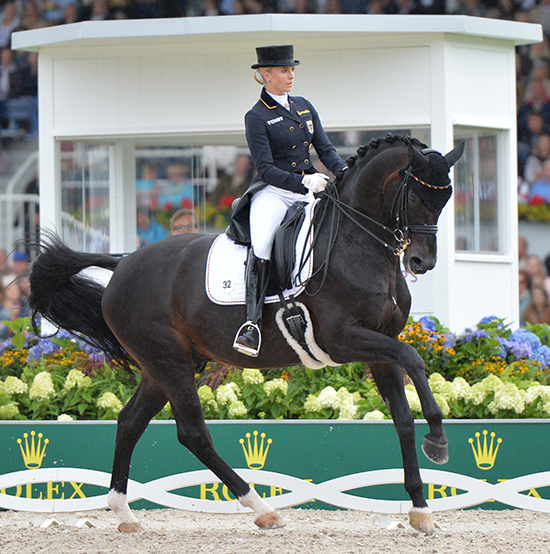
Jessica von Bredow-Werndl and the charming Unee BB – the less famous Gribaldi son – Totilas is the most famous – and he’s available in Australia through IHB – check him out
Unee BB (Gribaldi / Dageraad) and Jessica von Bredow-Werndl, the first of the Germans, had a smooth, harmonious, accurate test for a 75.186, helped by a well-deserved 8.2 for the rider and that was about it in the first half of the day.
What buzz there was – as always – is about Totilas. I wasn’t at the trot up, but all the good judges I talk to, swear the black stallion was lame. The judges did have a bit of a conference but pass….! The feeling is that at best, he will do the Grand Prix, then retire (forever?) For that we have to wait for the second day.
So with the aid of the excellent WiFi service in the press stand, I do what I spend a lot of time doing: investigate the blood lines. I need the WiFi because the start sheets include horses with no breeding information, even though you can fill the gaps in less than a minute with a couple of mouse clicks…
As per usual, the stallion best represented is Donnerhall, who, while he has only one of his own progeny in the list, has sons and grand-sons, that contribute 13 of the 71 starters, just on 18%, and I am prepared to bet that by the time we have the top fifteen decided, that percentage is going to be way higher. This is what makes Donnerhall the greatest dressage sire of them all, his ability to produce stallion sons, who in turn sire stallion sons.
The most represented D stallion is the wonderful De Niro, with four, and his son, Danone (out of a Weltmeyer mother) Two of the De Niros are also out of Weltmeyer mares – Weltmeyer may not have been a stallion maker, but he has produced fine broodmares, although he was given a running start with a selection of 200 of the best mares Hanover had to offer in his first season…
The Trakehner Gribaldi (Kostolany / Ibikus) also has four, while there are four stallions each with two representatives: Rubin-Royal (Rohdiamant / Grundstein), Jazz (Cocktail / Ulster), Dimaggio (Don Primero / World Cup I) and Lancet (Wenzel / Shogun).
All of these sires competed at Grand Prix level, although only Donnerhall, Jazz and Lancet were really top international competitors.
Arlando (Paddox / Mytens) – above – and Diederik van Silfhout, are sitting on 80 after the halt. Very cute but still front legs waving, hind legs trailing. Mistake in 2s hurts, 8.1 for piaffe, grabs the lead for the orange army. 75.846
Fiona Bigwood (above) produces a super test on Atterupgaards Orthilia (Gribaldi / Donnerschlag) – lots of 8s, 8.4 for extended. 8.1 passage, 8.2 for the passage / piaffe / passage transitions, 8.5 for extended trot and an 8.1 for the rider. Score 75.8. and the Brits are still in the hunt, the Dutch just .46 in front. And the patch on the rider’s eye? After her accident Fiona has double vision without it…
Last for the day, Isabell Werth and one of my least fave horses, Don Johnson (Don Frederico / Warkant) – above. It’s high behind, and swampy backed, but Isabell has that capacity to MAKE THINGS HAPPEN. 8 for the halt and they are away, in the passage / piaffe tour the horse shows a weird rhythm, or anti-rhythm, he holds right diagonal longer. The ones are a disaster for a 4.7. They are generously marked for 74.9.
I must confess that I spent much of the second day over in the cleaner atmosphere of the eventing dressage ring, only to return to the fat horse class as the crowd cheers for Hans Peter Minderhoud and his stallion, Johnson (Jazz / Flemmingh) – above – with a score of 77.586 to take the lead.
Carl Hester did all he could to catch him on Nip Tuck (Don Ruto / Animo) – above – who looks less like a gentleman’s hunter and more like a dressage horse than when I saw him last. What an extraordinary talent Carl is to get such a tune out of a pretty ordinary conveyance. There is an 8.6 for the rider from the judges, and thunderous applause from the big crowd. Carl is rightly the most popular figure in the world of dressage. 75.4.
Time for Toto. My colleague (full-time equestrian journalist on a leading German magazine) dashes up to take her place. She has been watching the warm up… And? When he is tense he is alright, but the minute he relaxes, he looks lame, off hind. And he looks lame as he trots out of the halt, there are whistles and catcalls from the crowd. The movement-by-movement marks chose this moment to disappear. Odd that. There is a mistake going into the ones, and the canter pirouette – once the black stallion’s party piece – looks grumpy and put upon. More lame trot across the diagonal, and that’s it. His final test?
Five judges have him low, German! Katrina Wüst, 72.9. and 20th; Sweden’s Annette Fransén-Iacob, 74.6, 13th; Eddy de Wolff van Westerrode, 73.2, 10th; France’s Jean-Micheal Roudier, 71.6, 21st – one judge thinks it is worth a 79.3 (Anne Gribbons – her 3rd highest) and ye gods, two think it is worth 80!!! Denmark’s Susanne Baarup, 80.1 and 4th and Britain’s Andrew Gardner , 80.1 and 4th. They end up on 79.8 and most people I meet afterwards, even the Germans, think this is not good for dressage. As Bob Dylan once put it Money doesn’t talk it swears, obscenity who really cares, propaganda all is phony…
Next morning we see that Ms Barrup has been appointed to the Jury at Rio, this comes a week after she was one of the jury that infamously awarded Andreas Helgstrand a silver medal at the World Young Horse. Exactly what message is the FEI dressage committee sending?
Hello, the individual marks are back in time for a really cool test from the French pair, Karen Tebar and Don Luis (Dimaggio / Rubinstein) – above. She picks up an 8 for her passage entrance down the final line and an 8.1 for the rider, 73.829, which means two plus 70 scores for Team France, well done Jean Bemelmans, master trainer.
It’s great to see Beatrice Ferrer-Salut back with a nice horse, Delgado (De Niro / Weltmeyer) – above. A lovely flowing, correct test for 77.186, and Spain, like France has qualified for Rio.
Edward Gal and Glock’s Undercover – above. It’s little wonder they award 9.2 for the rider, since this test is almost totally manufactured by the guy in the saddle. On all the marks for the horse’s natural movement, the scores are down, like 7s for extended trot, but half pass, piaffe, passage, pirouette, all 8+, even a 9.4 for piaffe. Impressive, not sure it’s really dressage. Still a score of 84.2 with Baarup and 83.8 from de Wolf van Westerrode, they were of the opinion that it was the best test of all… even better than the divine Charlotte and Valego (Negro / Gerschwin).
To tell the truth it was one of Charlotte’s less celestial performances. Some abs fabs stuff and a few little glitches (7.7 for the rein back, 5.6 for the ones) – the horse is still the greatest I have even seen, hopefully he will really turn it on in the Special and the Kür. Still three judges have it on 83, one of 85 – Surprise, the Brit!
Kristina Bröring-Sprehe and Desperados FRH (De Niro / Wolkenstein II) can still push the Germans, into silver at least behind the Dutch. The black stallion is looking great, much stronger, working with Monica Theodorescu seems to agree with him. The test starts well, and then Kristina seems to get a bit overwhelmed, a couple of little glitches and a disaster on the changes of hand (5.3), still they finish with an 8.8 for extended trot and there is much to like about the performance. 79.743, with Anne Gribbons seriously out of whack with the rest of the jury, her 8th place while the others score one 2nd (the German), four 3rds, and one 5th, that’s from Ms Baarup who liked the other black stallion, the one with three legs, better… as did Ms Gribbons, and M. Roudier.
Next morning we are all shocked to find that Totilas has been withdrawn from the Special. Apparently it was only when they watched the video that night that they saw something wrong. It is just incredible that Mr Schockemöhle’s horse dealing empire survived in the pre-digital era…
The whole affair has been a sorry farce. The Germans would still have claimed bronze, with Isabell’s score, but the willingness to play games with the horse’s health does nothing for the image of the sport, and just reinforces cynicism about the dressage judges ability to judge.
More from Aachen:
Euro Champs 2015: Dressage – the Special and the PR disaster continues…




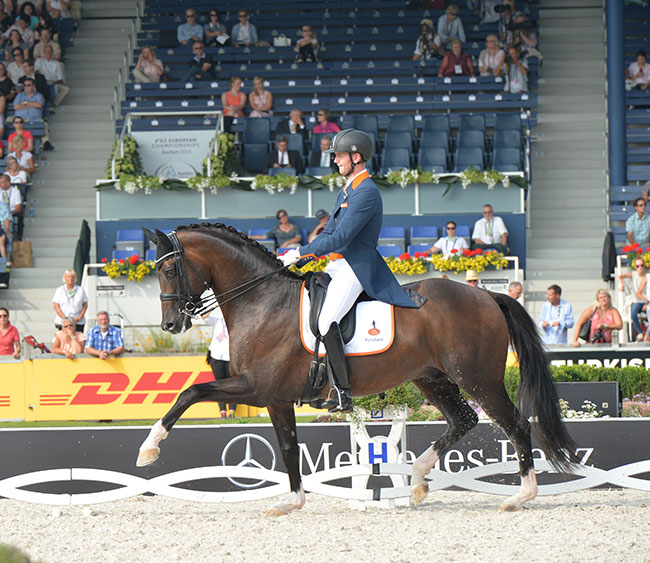
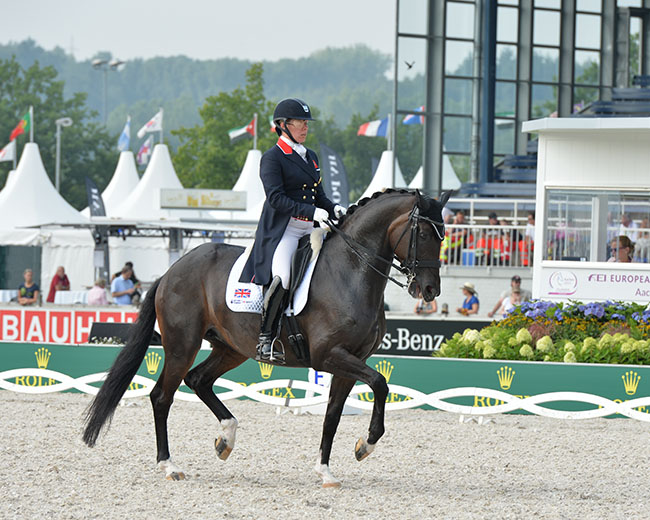
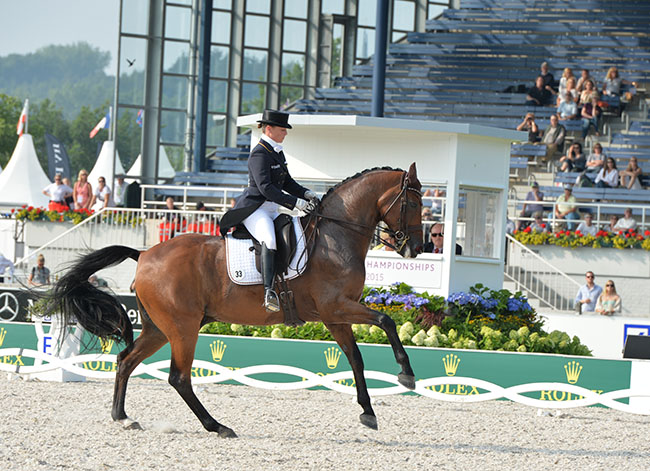

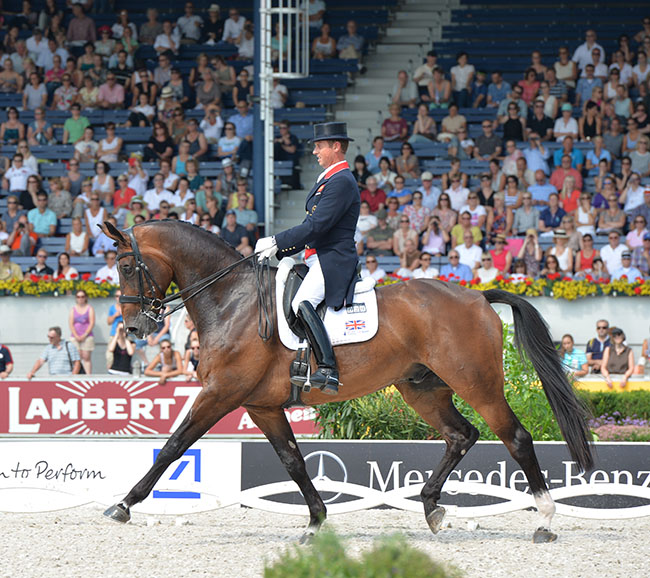
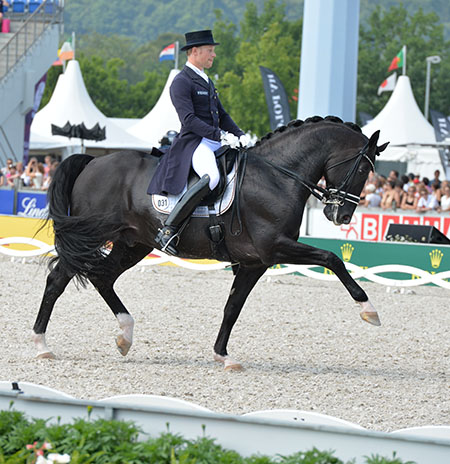
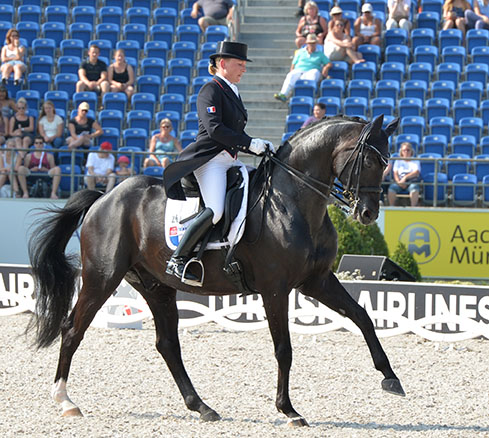
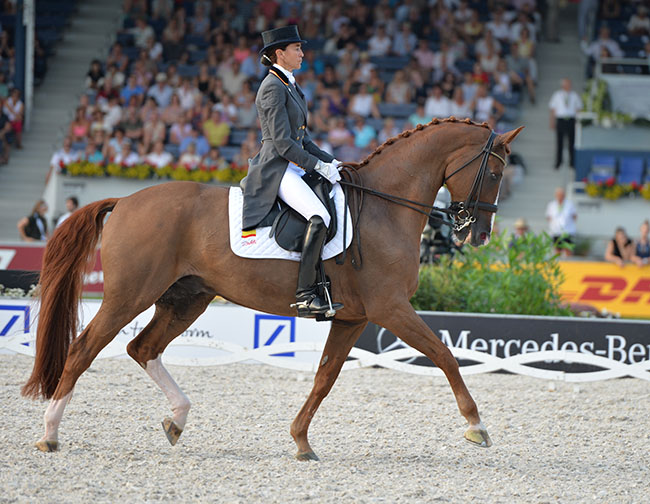
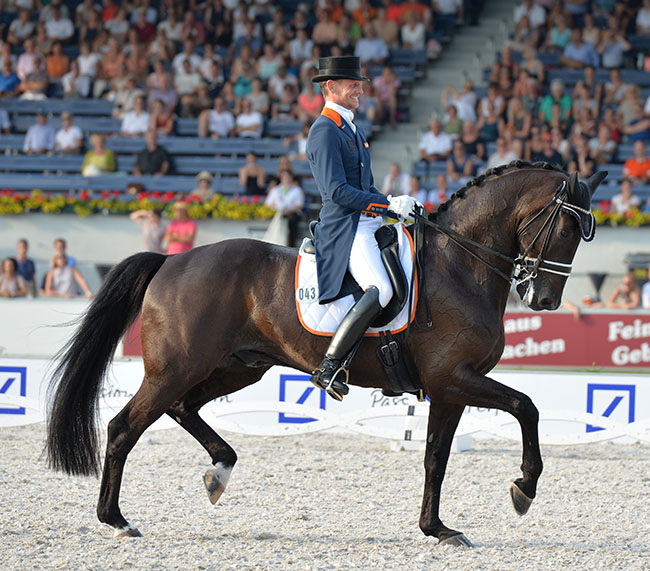
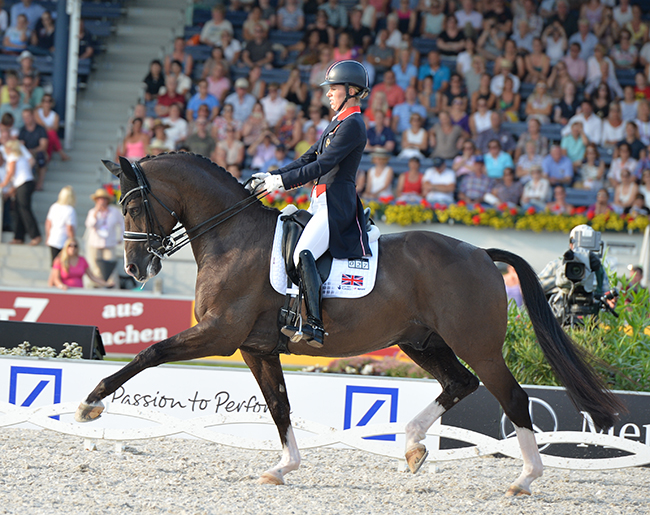
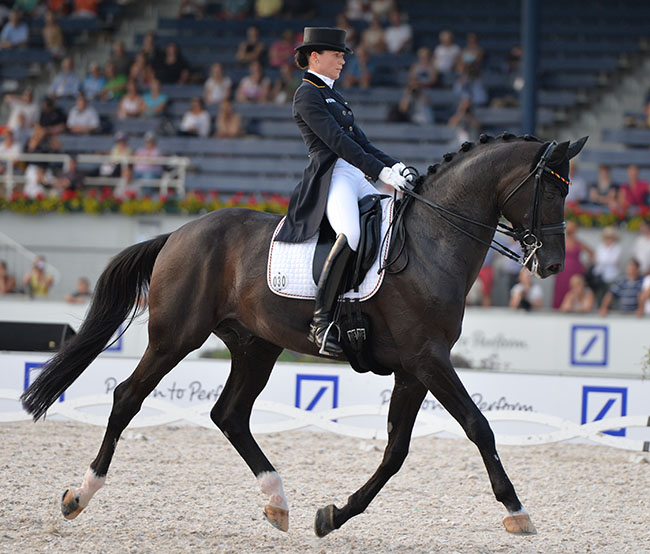
An article which says it like it is but to call Carls horse a conveyance is completely insulting.How demeaning, when we all know, no matter who you are ,to get a horse to Grand Prix at this level requires far more than merely a conveyance. Are you hoping your caustic tongue will get you noticed?
Your method of writing is fantastic to read! If only the problem people would read it too & listen!! Well done.
How sad for the sport on many levels, particularly horse welfare. And sad to recall those times when one didn’t need a Donnerhall son to compete. Gone are the days when you can save a horse from the doggers and make them into something great, which is what *real* classical training is about. They seem to have lost the understanding that “dressage” = “training” at the end of the day
The equestrian sport is a disgrace! It’s more like a competition in animal abuse than an actual show of art which dressage should be!
The saddest fact of this article is the statement at the beginning, ” ..With the judges on day one secure in the knowledge that they are looking at the also-rans, it will be amazing if we get a movement mark of better than 6.9 …”
Now correct me if I am wrong, but the judges are not supposed to be judging rides based on previous performances or scores, but based on the test that is being ridden in front of them. Not scoring based on who the rider or the horse is, but by the merits of the actual ride. This article presents the biggest issue for the sport of dressage, not that those who have not peaked in their performances yet are going first. No, it is the fact that instead of a performance judged solely on the merits of the athletic performance today, judges are swayed by who is performing and in what rank they are performing. These are the issues that put our sport at risk. These are the issues that create the perception of elitism …
A return to judging on the standards of dressage, not flag, not names, and not “wow” factors is what will bring our sport back to the glory and see we used to inspire.
I couldn’t agree with Lisa M more. And also add that each horse’s breeding should not be such a significant factor. This is what is driving the circus horse, elitist business packaging ruining what used to be a beautiful sport. Putting the so called good horses totally out of reach, so we only see the rich and / or ruthless “making it”.
Each test should be judged on the merit in the moment, and each horse on correctness and quality for their given conformation and capabilities, not on how flashy it looks or how well the rider disguises the fact that it’s hollow and held in.
I applause the riders who give their horses time to develop and grow, unlike the ones who get them to Grand Prix by dubious methods at very early ages, only to have to retire them or sell them when they can make some bucks. Disgusting and certainly not a sport, but just the elite and the ruthless with their slaves.
Kamini – How can a horse’s breeding not be such a significant factor?? Without it, these horses would not exist (especially at these levels). And, if anything, these good horses are being put further into reach. Today you can import semen from the top stallions at a reasonable price and find well bred broodmares for fractions of what it used to be. Yes, this sport is expensive, but for those of us who are smaller time breeders, we can produce Olympic quality horses. Totilas himself comes from a breeding farm that only produces two foals a year – proving you do not have to necessarily be as rich as Schockemöhle or ruthless to “make it”.
Love this read Mr. Hector! I 100% agree and am glad it has been said on the international stage.